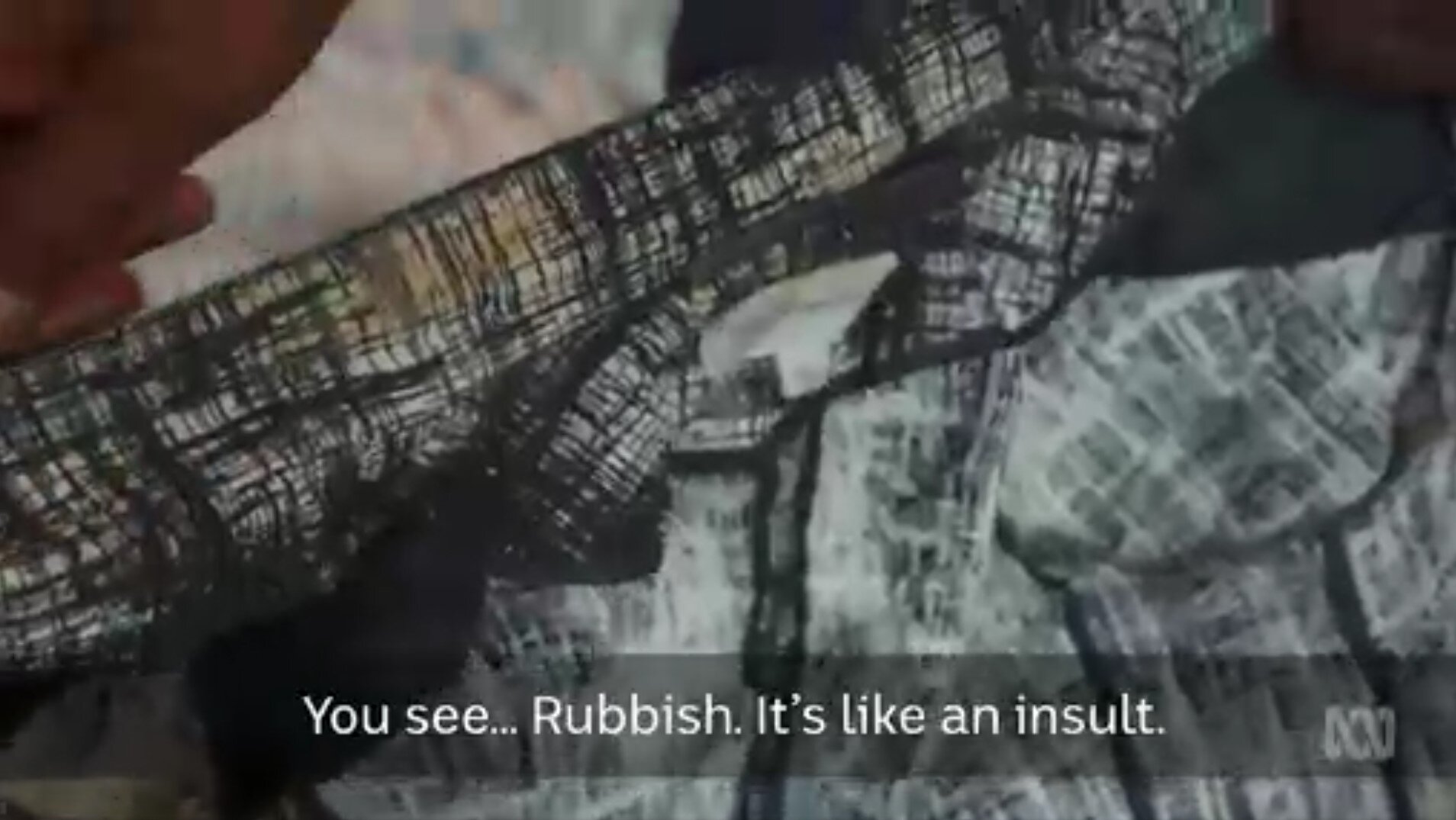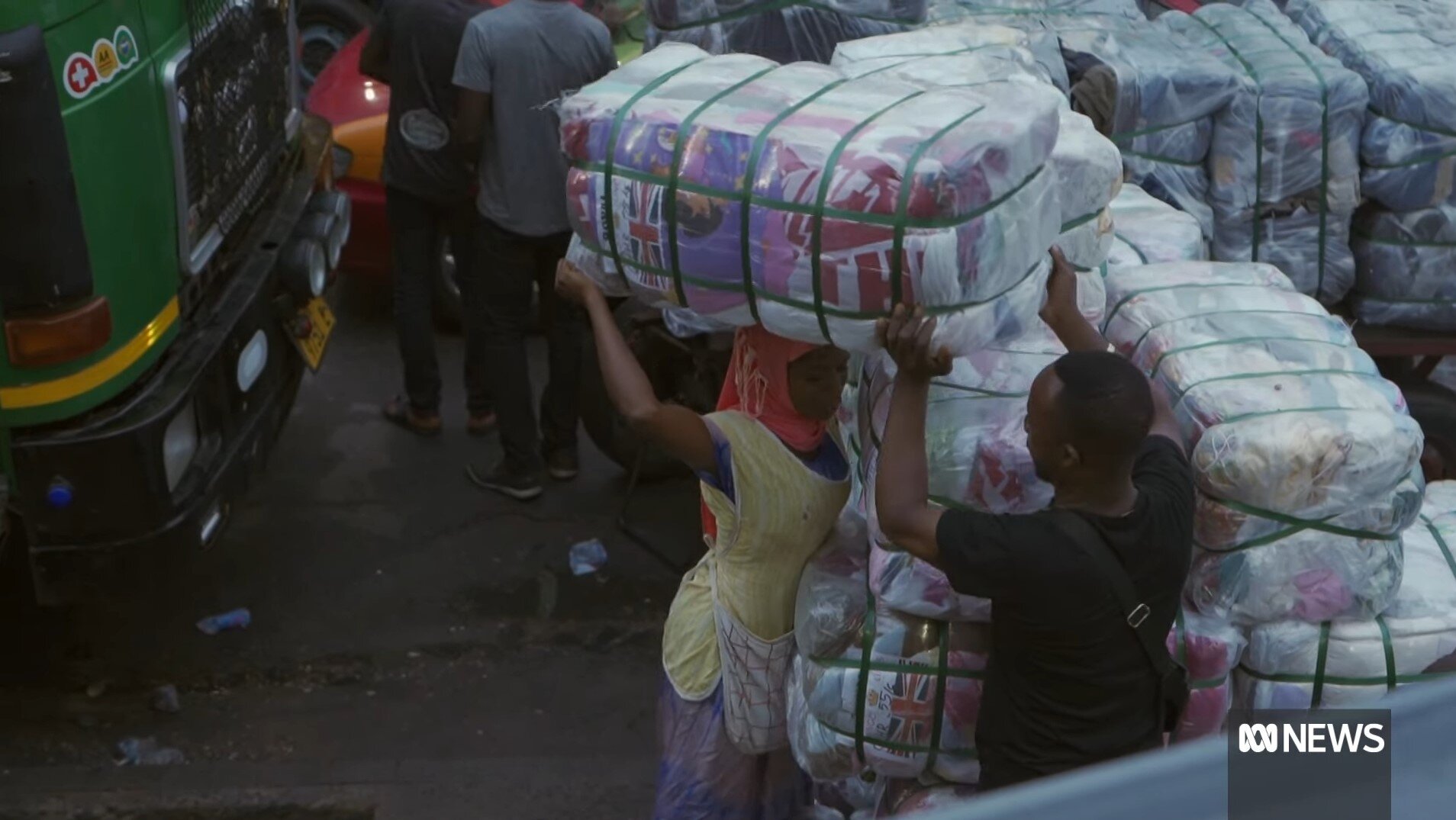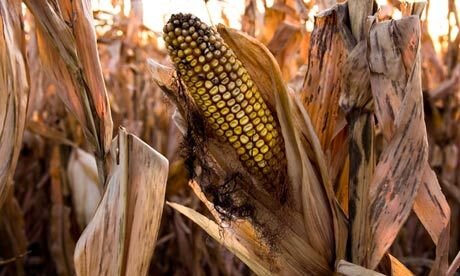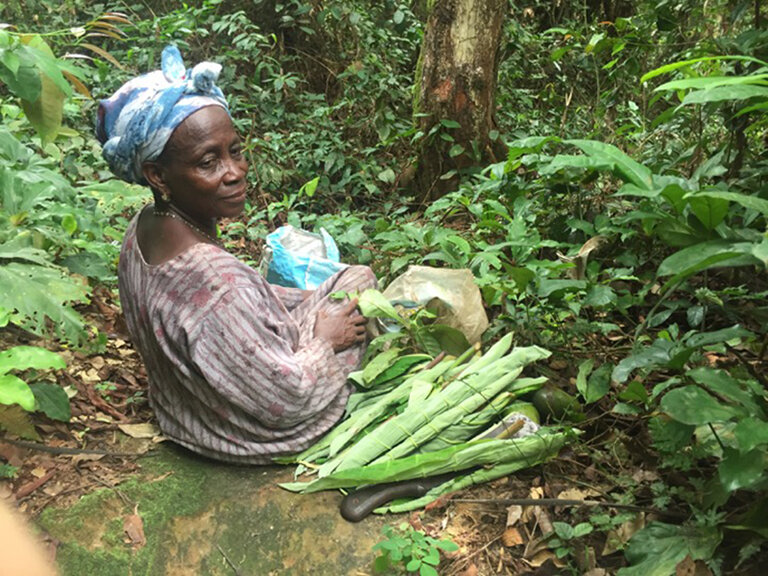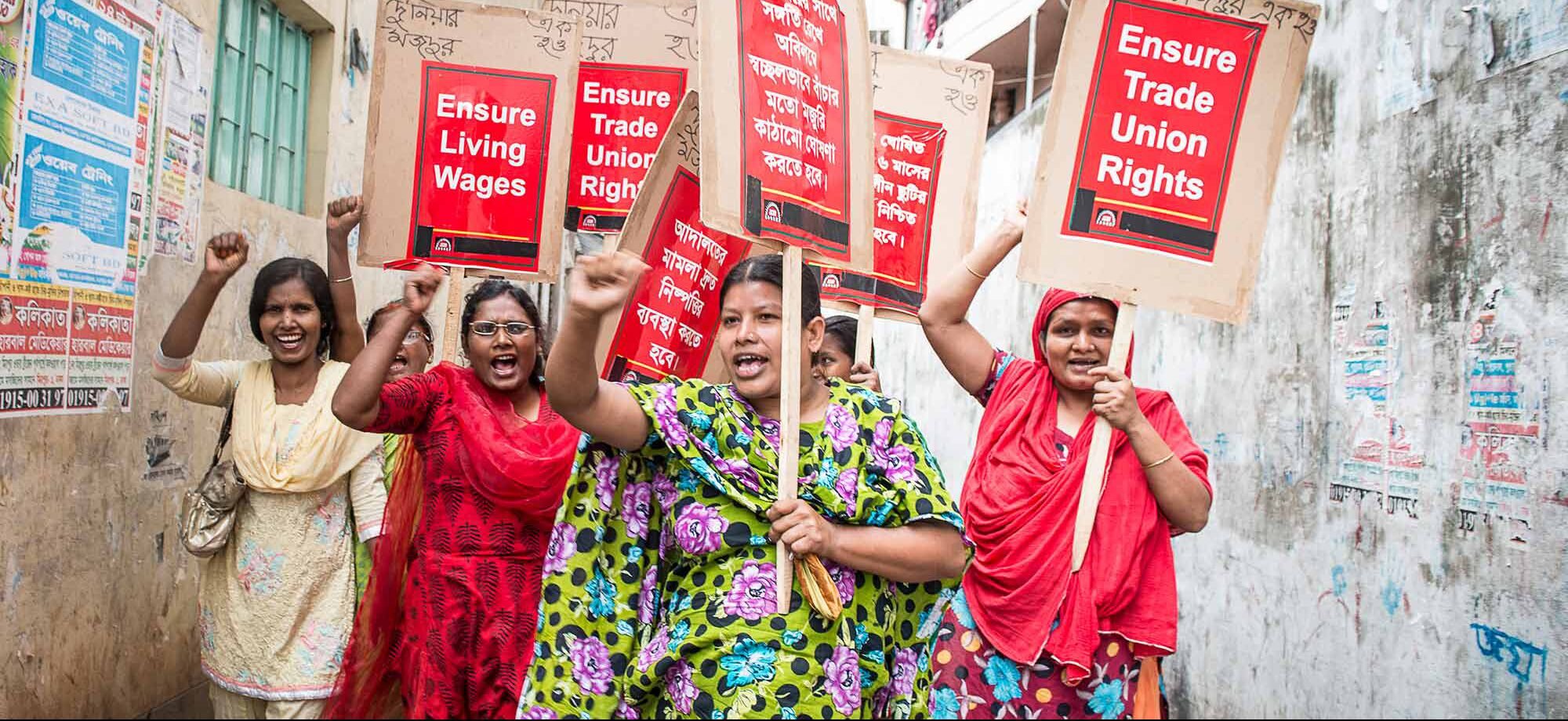For decades, we’ve acted on the notion that donating our unwanted clothes to thrift stores is charitable, a way to extend the life cycle of our clothes and to reduce fashion waste to landfill. This is all true.
To an extent.
With the increasing rise of fast fashion over the last two decades and an estimated 150 billion being manufactured each year, this notion has become malignant for the most part.
With this mass onslaught, came the reduction in clothes quality.
A huge portion of our unsold second-hand garments from thrift stores, clothing bins, charity collections and the like get shipped to countries in the global South for profit, also often under the guise of charity.
Considering this linear process has been increasing in the last couple of decades, do we ever think about what happens to our fashion castoffs once they hit foreign shores? Or question if this growing linear loop is healthy or is it creating an environmental disaster elsewhere in the world?
Have we thought to consider whether poorer nations need our ‘charity’ or do they, perhaps need justice and equity?
How did this all begin for me?
I was born in Nigeria, grew up in the USA, and lived in Nigeria (West Africa) as a teenager. A vivid memory from my teenage years combines my love of style and my later studies in international development.
It was one of the happiest days of my life. It was the day I began shopping for secondhand clothes as a teenager in Nigeria.
They were all imported from countries in the global North (the richest countries in North America, Europe, and Australia).
The sight of colourful, vintage, retro and trendy fashion in a shop window grabbed me by the throat and drew me into the thrift store like it was Willy Wonka’s chocolate factory. Seeing the eclectic range of fashion styles from different eras was like being in Aladdin’s cave of treasures.
I was spellbound for several hours playing dress-up until the shop closed.
Little did I know that that was the eureka moment that would shape my life purpose and career in sustainable fashion and international development. I frequented these shops as often as I could with a kind of ferocious enthusiasm that I had never experienced before that day.
But as time went on, I began to sense a brewing inequality that came from observing the impact that imported second-hand clothes were having on the local environment and the local textile industry.
Where I am today
I live in Sydney, Australia, now. And my teen years in Nigeria is not just a memory but a touchstone that is still revisited through my work as a sustainable fashion educator, consultant and climate advocate.
ABC Australia aired a documentary called The Environmental Disaster that is Fuelled by Used Clothes and Fast Fashion. It exposed the lives of shipped second-hand clothes and those that handle them as they arrive on the shores of Kantamanto Market in Accra, Ghana in West Africa.
As someone originally from West Africa, this issue hits very close to home.
In July 2020, I wrote another article about the quandary African countries are forced into because of secondhand imports. Today’s article is using the ABC documentary as a case study to scrutinise the implications of our addiction to shopping, overconsumption and the hidden inequalities that surround secondhand fashion exportation.
Moreover, to face the reality that the problem is far rooted in neocolonialism, imperialist and neoliberal systemic inequalities. And how we can dismantle these systems to bridge the gaps of inequality and global justice for more permanent, genuine development in poorer countries. Which ultimately could have a knock-on effect on helping to reduce fashion’s impact on climate change.
Kantamanto market, Accra, Ghana. Image: ABC Australia
The Documentary
The documentary investigated the journey of exported secondhand clothes from their arrival at Kantamanto market in Accra to the very end of their life cycle. The market is one of the largest markets in West Africa.
From there, clothes get shipped to other African countries.
The ABC reporter, Linton Besser, explored this from 3 perspectives:
1. the experiences of a second-hand clothes importer,
2. a reseller
3. the city’s waste manager.
For several decades, second-hand clothes have been shipped from richer countries in the global North to countries in the global South (poorer countries in Africa, Asia and Latin America).
These clothes are shipped in bales for resale and reuse. The population of Ghana is 30 million, while at the same time, 30 million garments are imported every week.
This trade has created tens of thousands of jobs in the receiving countries including Ghana over the years. The amount of clothes being shipped continues to increase significantly and the quality of clothes being shipped continues to decline dramatically.
So, what were these 3 perspectives?
Emmanuel Ajaab, The Importer
Importing second-hand clothes ‘wholesale’ is Mr Emmanuel Ajaab’s livelihood. Importers have to pay upfront sometimes as much as $95,000 for a container with no guarantee if the clothes inside it are any good. Mr Ajaab pays $92 for a bale of clothes with about 180 – 200 pieces. In the film, one of his bales was opened to reveal that only 7 items out of the entire lot were saleable!
The rest had to be thrown away because they were dirty, stained or damaged in some way. This is very common in this trade. An estimated 40% are of such poor quality they are deemed worthless on arrival and end up dumped in landfill.
In a conversation laden with disappointment and bolstered by anger, Mr Ajaab said "In Europe and UK and Australia, America they think Africa here, we are not like human beings... Because what they are giving to us is like- even if somebody knocks on your door and you want to help, you cannot give, pick something from your dustbin and give to the person. So, in this case, it's like they are doing this to us.” He is right. We are literally shipping our trash to countries in the South. And worst of all, many people in the North add insult to injury by calling it charity.
This reeks of racism.
Aisha Iddrisu, The Reseller
The sustainable fashion movement often advocates for justice and equality for garment workers who make new clothes primarily in Asia. The plight of secondhand garment workers is rarely mentioned. Until now. In the documentary, we got a rare glimpse into the life of a female second-hand garment worker named Ms Aisha Iddrisu, with her 18-month-old toddler.
Aisha collects a bale of clothing from importers weighing approximately 50kgs to sell. With her toddler tied to her back, she carries the bale on her head and walks to her destination. Ms Iddrisu lives from hand to mouth as she makes less than $5 a day which is well below the global poverty line and not enough for daily expenses.
Aisha Iddrisu and son Sharif. Image credit: Andrew Greaves (ABC)
Ms Iddrisu says she is often exhausted and sore and has to take painkillers before bed. She says many second-hand garment workers get injured to the point where they’re no longer able to work and have to be sent back home to rural towns and villages where they came from.
Most of them experienced internal displacement by conflict or unemployment which forced them to move to big cities like Accra to seek employment. Ms Iddrisu also lives in a small room with her child and 5-6 other women.
*It’s very interesting that the lifestyle of secondhand garment workers like Ms Iddrisu is nearly identical to that of garment workers in other parts of the South who make brand new clothes for fashion brands.
Solomon Noi, The City’s Waste Manager (Environmental impact in Accra)
Mr Solomon Noi, The Director of the Waste Management Department at Accra, took us on an excursion in the documentary to see what happens to the unsaleable clothes. About 15 million used clothes come into Accra every week from Australia, the US, UK and Europe and fill the Kantamanto Market according to Mr Noi.
He also said “this place is serving as a dumping ground for textile waste in the name of second-hand clothing. Close to 40% of whatever shipments are coming daily ends up being complete chaff of no value.” In other words, imported fashion waste has turned parts of Ghana into toxic landfill. Because each week 6 million garments deemed waste from Kantamanto Market end up being dumped in landfill, the city of Accra is saddled with the task of finding a place to dispose of 160 tonnes of textile waste every day.
Image: ABC Australia
The environmental damage in Accra is very real
Whenever the monsoon rainy season hits, the unwanted garments that litter the streets and trash are washed into the city’s waterways where they cause blockages.
The massive downpour of rain also washes unwanted clothes into the ocean where they sit at the ocean bed, choke aquatic animals and become entangled in the motors of fisherman’s boats. They also litter the beaches and get buried deep in the sand to the point where they must be dug out.
The area designated as landfill in Accra was meant to last 15 years before being filled up but instead, it’s been filled up within 5 years because of imported fashion textile waste.
The city is now forced to use unregulated areas and means of disposing of this trash such as burning it which blackens the city’s skies. A significant majority of the clothes are made of synthetic textiles (such as polyester, nylon and spandex) that take hundreds of years to decompose. Thus, leaving neighbourhoods in Accra with mountains of waste pollution that will cast a toxic impact on current and future generations.
All three perspectives are important. And voices like those of Mr Ajaab, Ms Idrisu and Mr Noi need to be at the centre of the discussions.
As someone with a solid background in both the global South and global North, who has studied international development, works in the sustainable fashion space and has first-hand experience of these markets, I’d like to add my perspective.
Economic and ecological observations of a teenage fashion lover in Nigeria
Environment
As much as I loved secondhand shopping as a teenager in Nigeria, I got a lot of anxiety from seeing a massive portion of imported clothes ending up as mountains of trash mixed with household trash.
These trash mountains were situated in and around residential areas. Whenever it rained, the rain would seep through these mountains, washing through the synthetic textiles, releasing toxic groundwater (build-up of chemicals) that would flow into freshwater bodies that people used for drinking, household consumption and farming.
Toxic groundwater reduces soil fertility and can potentially become acid rain (meaning it can evaporate with the toxic chemicals and then turn into rain, then rain the toxins across a wider area). Toxic rain and groundwater alter the pH levels of freshwater bodies. It can be hazardous or deadly to some marine species.
2. Local fashion and textile industry
There was another observation that I made as a teen that I would later come to realise was deeply rooted in a sinister, structural inequality. Many of the local tailoring shops, traditional, local fashion businesses that fuelled the local textile and fashion industry were closing down.
They could not compete with the oversupply of cheap, used fast fashion.
So, it was destroying the local clothing industry from developing and furthermore, strengthening the nation’s economy could lead to poverty reduction.
This was also featured in the documentary when it pointed out that “Western castoffs are so cheap that local textile makers can't compete. Since the 1980s their output has fallen by as much as 75%. Traditional African clothing has now become too expensive for everyday wear.”
Credit: UNHCR
Structural inequality: the colonial, neoliberal and imperialist dynamic between global North and South
What would it mean for the South if millions or even billions of dollars were appropriated towards the development of its industries?
It was said in the documentary, “every year as many as 4 million tonnes of used textiles are shipped across the planet in a trade estimated to be worth $4.6 billion.”
If figures like this were invested directly into cultivating the nascent local fashion and textile industries within countries of the South, it could potentially lead to a boom in their economies, poverty reduction and bridging some of the inequality gaps.
So why isn’t this already happening? Because it would make these countries more self-reliant, and less dependent on the North for aid, loans and assistance. Why is this an issue?
The North would lose its power grip over the South. And with it, the ability to rob the South of raw materials, resources, cheap or free labour, wealth and other benefits of postcolonialism. Herein lies the root cause of this systemic inequality and oppression of the South.
Some countries in the South want to break out of this type of dynamic but are unable to because of the complexities of the situation.
Rich nations have all the bargaining power over the South when it comes to international trade agreements, policies, reforms and creditor arrangements with poorer countries. They leverage these powers for their own interests and build up their own industries.
Credit: Review of African Political Economy
The power stronghold began in the colonial era (arguably from mid to late 19th century to mid-20th century). During which the North ravaged the South for gold, slaves, land, silver and cheap labour to develop their industries and economies. This created a massive income gap that placed the North firmly in a position of power.
But colonialism didn’t stop in the middle of last century. It shapeshifted.
Through imperialist and neoliberal policies like illicit debt reforms, trade arrangements, etc, colonisation lives on within the global political and economic systems.
To the point where the income gap between North and South is now about four times bigger than it was in the 1950s. Richer countries have created structural inequalities that keep poorer countries from executing policies that would grow their economies, reduce poverty and establish power over their own development.
This is the overarching systemic oppression that keeps the South poor, vulnerable and seemingly in need of aid. It’s why the North for many decades has consistently been able to ship its ‘garbage’ to the South.
Consider and reflect…
The ABC documentary and my personal experience in Nigeria tell the stories of secondhand clothes in two West African countries. But the truth is that these types of stories happen in hundreds and possibly thousands of other towns and cities in the global South that receive used clothing.
Each place will have its own story of how fashion waste has been toxic to its environment, communities and landfill.
And if we were able to see each story within each city in the world, I believe the true extent of the global fashion waste crisis would make us gasp in absolute horror.
If we’re seeking solutions, it’s necessary we look at the dilemma with a wider lens and from multiple angles. This will equip solutions with a stronger chance of being permanent. Applying a holistic approach is crucial for this process. Here are some factors to reflect on and consider.
The fashion waste crisis exists because as consumers, we’re addicted to shopping. And fashion brands produce far too many clothes. According to American Fashion Waste Campaigner, Liz Ricketts, in the documentary, a lot of fashion brands overproduce by up to 40%. Waste is part of the business model of fashion. And overall, about 150 billion garments are being manufactured each year. Overconsumption is the key issue here. It’s as if we’re trying to consume our way into our own extinction.
It’s actually the South that’s developing the North, not the other way round. This is a fact based on the colonial, imperialist and neoliberal structures of material extraction, production, and economic growth. From the colonial era to date, the established model has been set up in ways that the South often provide much of the raw materials and labour that goes into growing the economies of the North. Sadly, the South too often has to deal with the environmental repercussions of this system. As for the socio-economic implications, the poorest half of humanity is still in the South.
The creation of jobs from imported secondhand clothes in developing countries is a huge benefit. At the same time, it has been a major roadblock for countries trying to grow their own textile and clothing industries which can help boost their economies, reduce poverty and create thriving businesses with secure employment for the population.
Banning secondhand fashion imports by governments in the South to support the growth of the internal clothing industry seems like a viable option for poorer countries. However, if a ban is suddenly imposed, it would plunge many garment workers such as Ms Iddrisu into destitution. A more viable option would be to gradually scale down the number of clothes that get shipped each year. While introducing alternative careers, businesses and other opportunities correspondingly. Realistically this will require planning and the support of local governments, the private sector or not-for-profit organisations.
The ferocious increase in the pursuit of material stuff over several centuries has brought us here. To a place and time where the world is rife with inequalities and oppressions that affect so many. If you dig deep and then dig even deeper again, you’re likely to discover that at the core, it’s all about materialism. Our world has been designed (by us) in a way where material is king. Therefore, whoever holds the most, has the power because materialism fuels power. At the time in our history when this notion became the guiding principle of humanity, that was the beginning of our downfall. Overvaluation of material stuff, be it money, raw materials, etc was and is arguably the driver of colonialism, neocolonialism, imperialism and neoliberalism. It’s the underlying factor that sometimes underpins big capitalism to focus purely on profit at all costs regardless of lives damaged/lost and despite environmental damage levied on the planet. Materialism also pushes individuals (us) to overconsume and devalue empathy, justness, our intuitive guidance, connection and community.
Banning the import of used clothing can have economic and political risks for Southern states. As stated above, rules prevent some poorer countries from refusing to accept the ‘trash’ of the North. They risk sanctions, trade opportunities or being blacklisted in the global political and economic network. It’s unjust and unfair. It makes these countries pawns in the game instead of equal partners with capabilities to decide their own fate.
Through the stories revealed in the documentary, the racist implications of shipping unwanted items are made visible. On several occasions, I’ve spoken at sustainable fashion events where heads of clothing charities and secondhand clothing exportation businesses here in Australia give themselves a huge pat on the back while bragging about how many tonnes of secondhand clothes, they ship to the South each year. When I bring their attention to the social and environmental consequences of their actions on the countries they ship to, they continue to insist that they’re doing very good work. They emphasise that their work is charitable (which it is in some instances). They respond by saying that the clothes they send are desperately needed and wanted by people in the receiving countries. The supremacy coming from these people is undeniable and it has to change.
Where consumers are concerned, too often people donate unwanted clothes to charity shops in deplorable conditions like unwashed, dirty, or damaged, knowing that many of those clothes will eventually get shipped to poorer countries. It feels like a testament to their lack of respect or regard towards the people who will receive them. From my experience, people who donate damaged clothes still believe themselves to be charitable even in dumping unusable clothes. The other reason is that they either can’t be bothered to take their unwanted clothes to the tip/the dump or they do not want to pay the fees required in doing so. The disposal costs are then shifted to charity shops. If respect and empathy existed, the situation would be different.
This notion of shipping our ‘trash’ in the name of charity goes far beyond the fashion industry. This concept happens in similar patterns within other industries like automobile and tech for instance.
Where do we go from here?
Now that we’ve uncovered some of the ways that this global issue is far more gargantuan than meets the eye, it deserves to be addressed through multiple concepts that incorporate holistic and thorough considerations. The purpose is to elicit more permanent solutions based on fairness, equality and justice.
Image: ABC Australia
1. Quality control in shipping
The intuitive, simple and straightforward solution to shipping unsaleable clothes is to impose quality control with all shipped clothes to ensure they are of saleable quality. And of course, this means everything we donate must be of decent quality and in good condition.
Currently, only about 10% of shipped, used clothes are of saleable/usable quality (according to the observation of Mr Ajaab’s bale in the documentary). With standard controls, the amount of clothing being sent will drop down by about 90%.
This means less environmental pollution in countries like Ghana will be far less.
It’s fair and just for importers like Mr Ajaab who pay huge sums for bales with only 10% value.
As for the rest of us in the North, we’ll immediately be confronted with about 90% of used clothes on our shores that previously would have been shipped.
The good news? Having this on our shores, quickly filling up our landfills is a challenge that will hopefully force us to address our addiction to material things and overconsumption.
2. Drop the saviour complex! The South needs justice and equity, not charity
To counter the inequalities and racism of this big dilemma, the cardinal rule for all interactions and agreements with the South must be to operate from a place of equality and justice, not charity.
Banishing the notion of aid and the mindset of the saviour complex is critical. If the North had never colonised the South, the South would still exist and might very well be thriving. So, drop the saviour complex.
I mentioned earlier it’s actually the South developing the North and not the other way round. Aid is given to the global South by the North each year, but the amount taken out of the South from the North each year is up to 24 times the aid the South gets! This is because an estimated $2 trillion streams from the North to the South every year in the form of aid, investments and loans.
Meanwhile, $5 trillion dollars flows back from the South to the North each year, meaning the North takes $3 trillion dollars a year from poorer countries.
This is made possible by international trade rules structured in ways that enable the North to receive cheap resources and cheap labour at the most unjustifiable and unfairly minimal prices.
Also, through crooked financial transactions like interest on debts already paid, tax evasion and illegal financial transfers by large international corporations.
Reflect: even though humans in the South supply the biggest chunk of resources and labour towards the global economy, every year the most impoverished 60% of people on the planet get only 5% of the fresh income that is created through global economic growth. The remaining goes to those who have already been wealthy. Justice is the solution here, not more aid, charity or used stuff.
Image: Capacity Media
3. Dismantle Systems of Injustice: Neocolonialism, imperialism and neoliberalism
The key part of this process is giving equal voting power to countries of the South within international trade rules and with global financial institutions such as the World Bank and IMF.
The power to decide their fate and future can shift circumstances in their favour.
The South has about 85% of the world’s population yet only has less than 50% of the votes that will determine their fate. These financial institutions have been set up in ways that give wealthier countries all the power to hamper poorer ones from creating progressive policies that will develop their industries such as fashion for instance.
This is the biggest injustice that keeps the South dependent and vulnerable. It’s the smokescreen that creates the illusion that they’re constantly in need of aid. Meanwhile, the truth all along has been that equality is absent from the entire situation.
With equity via equal voting power and fair rules of trade, it’s far easier to dismantle neoliberal, imperialist, neocolonial systems and bring genuine balance, harmony and equality to the global system.
When there is power balance, poorer countries will have the audacity to refuse trade agreements and other regulations that are not in their own best interests such as shipments of ‘trash’ from wealthier countries. They will stand on equal footing with their Northern counterparts. Dismantling oppressive systems is how equality and justice can be won for the South, allowing clothing & textiles and other industries in the South to fully blossom and thrive.
4. Face our personal and collective demons of overconsumption
We’re each responsible for tempering our shopping and consumption habits. One key part of this is letting go of the need to use fashion trends or material things and products to boost our self-worth or self-esteem.
Here’s where we can remove shopping and the accumulation of material things from the highest pedestal of human life and replace them with personal growth, connection and community development.
The progression of humanity and individuals does not depend on the acquisition of products and material things.
Endless consumption is not the purpose of our existence. At the current rate, we’re consuming ourselves into a state of obliteration.
5. Human progress over material stuff
To reverse material overvaluation, it’s critical that we place empathy, justness, intuitive guidance, human lives, genuine connections and community well above any notion, policy, trade agreement. And most of all, it’s critical that we do this in our personal lives. Fawning over ‘material kings’ does not help matters. Instead, we can question them about the human beings involved and the environmental impact of their material wealth accumulation. It’s far more helpful if we fawn over communities with opportunities, healthcare, amenities and education for everyone.
6. Scale down production. Drastically!
Major (fast) fashion brands and big corporations in other industries need to stop overproduction. Profiteering through planned obsolescence should be banned. It’s possible through a plan to implement drastic scaling down of resource use in ways that restore harmony and balance with the planet.
This is an adjustment that must be executed with care so that it’s safe, equitable and fair for garment workers, ecosystems and the rest of the earth. Profits previously accumulated by these brands from cheap labour and resources extraction can and should be redistributed to support and improve the lives and communities of garment workers in the South.
What’s fundamental here is the necessity for fast fashion brands to shift from the capitalist model of endlessly accumulating profits at all costs (regardless of the harm done to people and the planet). And also quit the addiction to financial growth over human life and planetary health, even if it’s in the name of economic growth.
Economic growth as it stands today drives the cycle of pillaging the earth for raw materials, overproducing, overconsuming and then dumping the burden of disposal onto poor countries who are forced to take the social and environmental fall for this model.
It’ll be a sad story if humanity becomes extinct all in the name of economic growth.
Instead, we can turn things around by removing profits as society’s measure of success and replacing it with massive advancements in healthcare, education, environmental regeneration, rehabilitating landscapes, the arts, teaching and renewable energy.
7. Support (and learn from) the development of fashion industries in the South
Historically, the business model of most fashion industries in the South has never involved cheap, mass-produced disposable garments. Slow fashion and sustainable production was an unspoken aspect of their business model. There is much to learn from the artisans and makers of the South that has been ignored and disregarded for far too long.
There are many ways to do this like buying and promoting products from brands, designers and makers to help their businesses gain a wider and global reach.
Nonetheless, to help develop the entire industry to self-sufficiency, it’s most vital to scrutinise rules and policies within existing and future trade agreements with developing countries that could hinder the growth of their clothing industries in any way. We can demand this from governments of richer countries.
Buying from and promoting communities, cooperatives, social enterprises and brands in the South is far less racist and a better way to bridge inequality gaps than sending them trash.




